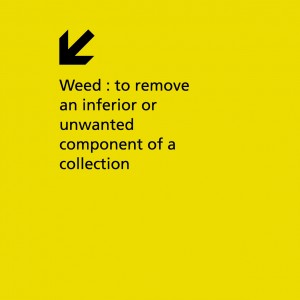“It does not matter how many books you may have, but whether they are good or not.”
– Lucius Annaeus Seneca (3 B.C.-65 A.D.), Epistolae Morale
Six months into a new position as a Teacher Librarian in a NSW DEC high school, writing a proposal for a Collection Development Policy has been an opportune and significant learning activity. While the second assignment required broad strokes utilising the topics covered in modules presented in the course, I found myself mentally applying the elements of the topics covered and the resulting proposal structure, to the specific circumstances and challenges of my new role. The narrow focus of the first assignment, resourcing for a specific topic, was a good introduction to the challenge involved in developing a collection to meet specific curriculum requirements (Hogg, 2015a). The second assignment widened the horizon to incorporate the Library Collection as a whole.
As the course has progressed, I have applied the learning to the collection I now manage, and find myself suitably impressed by the previous holder of my current position. She was known as a bit of a dragon… but her skills in Collection Development are revealed to me now in a way that can only be described as impressed. I inherit a solid collection that is meeting the current needs of the learning community of my school – my challenge is clear… the continuation of this legacy. The development of my own set of selection criteria, applicable to my school circumstance and its changing needs, has been well informed by the readings and discussions on the forums in this course. The process of selection and acquisition in a school with specific budget constraints has also led me to realise the benefits of a well established, local bookshop, and the long connection that the staff have with my library collection (Hogg, 2015b).
The Australian Library and Information Association Schools considers that a Collection Development Policy is essential to a school library as it explains why the collection exists (ALIA Schools and VCTL, 2007). In considering the development of such a policy for my school, I have come to realise how important the four areas of analysis provided by the Collaborative Access Environment model are as posited by Hughes-Hassell in Collection management for youth : responding to the needs of learners (2005). In order to provide the service required by our Collection, as the Teacher Librarian I need to achieve a deep knowledge of my resources, a clear understanding of the learner characteristics of the students at my school, foster strong collaborative partnerships with other teaching staff, and gain access to and understanding of the teaching and learning programs being offered at my school. This is quite a challenge and forms only part of the role of the Teacher Librarian in a school library – but certainly provides clarity of purpose as I move forward and develop skills in this position.
Amongst the many other topics covered by the modules in this course, there are a number of challenging facets of the TL to be honed, one that particularly stands out for me is the process of weeding. Essentially, collection development means both adding to and subtracting from a library’s collection (Olin, 2012). Completing the CREW (Continuous Review, Evaluation and Weeding) (Larson, 2012) exercise was difficult – both in finding the time in a busy school timetable, and the torture of making decisions about the fate of individual books! Being a hoarder by nature is certainly not a useful attribute for a Teacher Librarian… and a focus for future personal growth in the role!
Lastly, planning a Collection is built on speculation (Anderson, 2011) and it is influenced by our inability to predict the impact of new technologies in education. Some aspects of our future in libraries seem predictable while others we will just have to wait and see.
References
ALIA Schools, and Victorian Catholic Teacher Librarians, (2007). A manual for developing policies and procedures in Australian school library resource centres. 1st ed. [ebook] Melbourne: ALIA Schools and VCTL. Available at: https://www.alia.org.au/sites/default/files/documents/events/policies.procedures.pdf
Anderson, R. (2011) Collections 2021: the future of the library collection is not a collection. in Serials, 24(3) Available at: http://connection.ebscohost.com/c/articles/67113024/collections-2021-future-library-collection-not-collection
Hogg, D. (2015a) Annotated resource list. Available at: http://thinkspace.csu.edu.au/debhoggoz/2015/04/03/etl503-assignment-1-annotated-resource-list/
Hogg, D. (2015b) Personal connections in the purchasing process. Available at: http://thinkspace.csu.edu.au/debhoggoz/2015/04/03/etl503-reflection-personal-connections-in-the-purchasing-process/
Hughes-Hassell, Sandra. & Mancall, Jacqueline C. (2005). Collection management for youth : responding to the needs of learners. Chicago : American Library Association
Larson, J. (2012). CREW: a weeding manual for modern libraries. Austin, Texas: Texas State Library and Archives Commission. Available at: https://www.tsl.texas.gov/sites/default/files/public/tslac/ld/ld/pubs/crew/crewmethod12.pdf
Olin, J. (2012). Letters to a young librarian: weeding is where it’s at: deacquisitioning in a small, academic library. Available at: http://letterstoayounglibrarian.blogspot.com.au/2012/01/weeding-is-where-its-at.html

